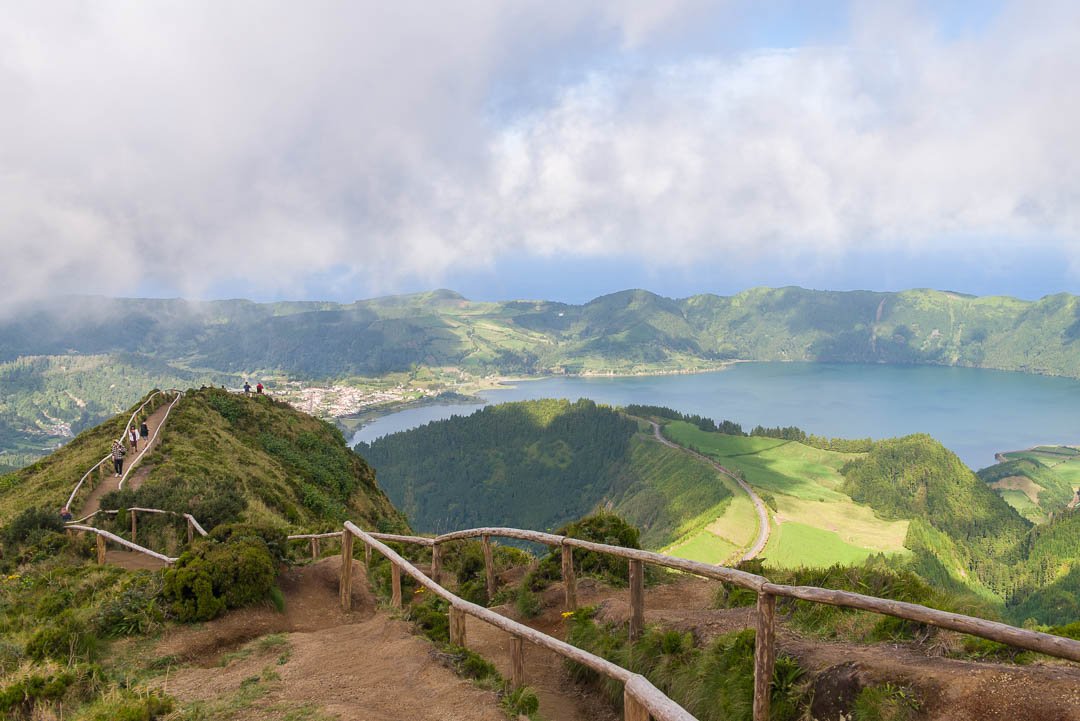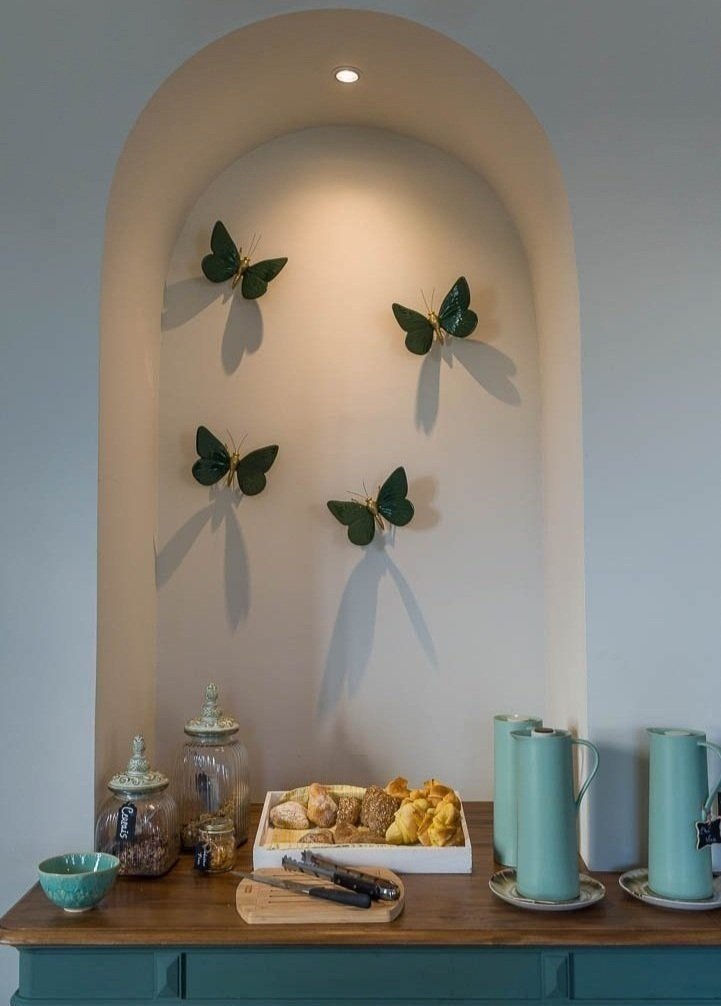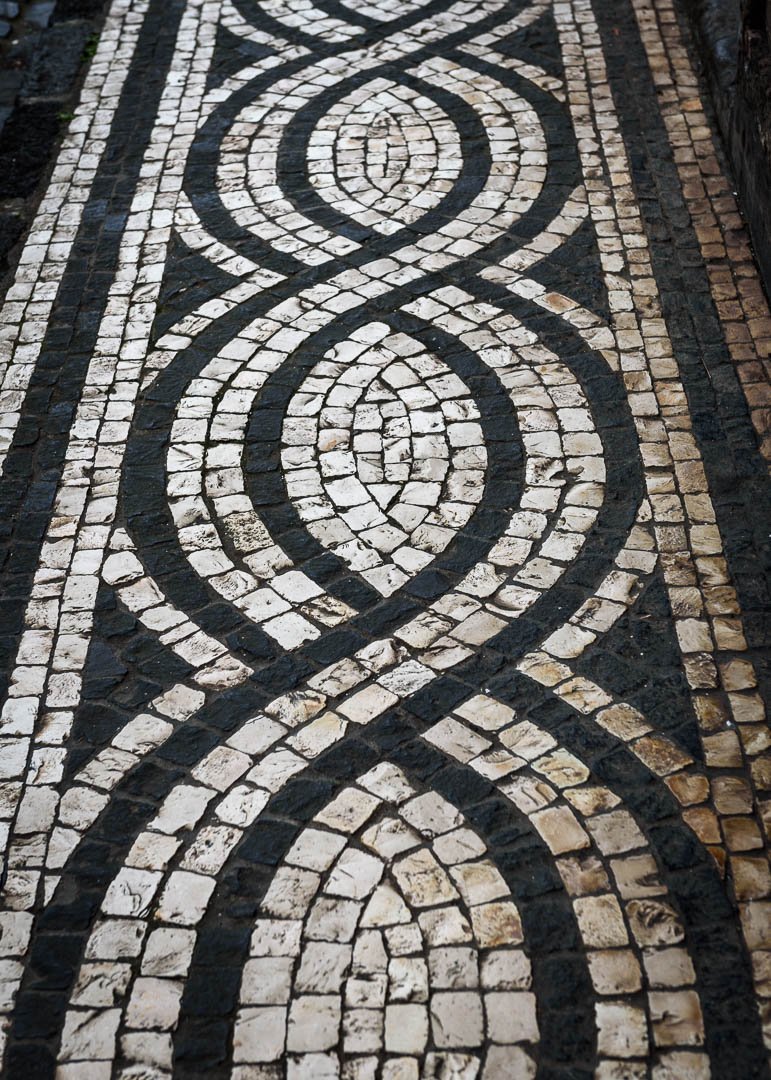Azores, Sao Miguel (4 of 4)
Ponta da Ferraria
Sao Miguel
Sao Miguel is the largest and most populous island of the Azores covering 290 square miles and 140,000 citizens, relative to outer islands which can have only a few thousand residents. The island is composed on two volcanic massifs, many smaller volcanic formations, and many calderas, lakes, caverns, and hot springs, meaning there is much to explore. While there are endless natural wonders to explore, Sao Miguel also has cultural highlights as well. I visited beaches, natural swimming pools and art openings, museums, and restaurants and barely scratched the surface, and hope to return. Although the island is not huge it is good to break up your time by region, as it can take a while to cross the mountainous island, and each area is full of things to do and see. As with the other islands a car is essential although in the towns of Furnas and Ponta Delgada, you will need to leave the car and travel by foot as parking can be a challenge.
My first stay on Sao Miguel is at the historic Pico do Refugio, located on the north side of the island. The 400-year-old family home has been a tea factory, a farm and a fortress. I appreciate the pastoral setting as Sao Miguel feels very urban after the quiet of the rural islands. Pico is also the site of an artist residency in the winter season, I am thrilled to meet owners, architect Luis Bernardo and photographer Andrea Santolaya. They invite me to an art opening at the Vaga Arts Center in Sao Miguel where local and international artists meet to share inspiration and classes.
Miradouro da Boca do Inferno, Hell’s Mouth Viewpoint, overlooking Sete Cidades
Termas das Caldeiras is centrally located and has long hours so I enjoy mellow evenings in the sulphury waters. Unfortunately the weather turned right as I planned to surf, but the Azores Surf Center and Scuba Dive both looked good. Nearby Santa Barbara beach is very popular with local surfers who brave the stormy waters.
Nestled in the middle of the island, farm to table Quinta dos Sabores is a delicious and fascinating dining experience. I managed to sneak in after seeing a couple in front of me ring the doorbell of the imposing doors, and showing up early get a table, but generally a reservation is a must. Everything is grown on the farm, made on the farm, and served as a creative tasting menu, ask to try the handmade liquors!
I did not eat here but these two restaurants are highly reviewed, Associaco Agricola de Sao Miguel and Restaurante Cantinho Do Cais, Ribiera Grande.
Ponta da Ferraria
Sete Cidades is a town set within a caldera on the spectacular lake, Lagoa Azul. I stop off and walk to the Miradouro da Boca do Inferno (Hell’s Mouth Viewpoint) on the way to the town, and highly recommend this walk. It’s a mild walk for epic views. There are great hiking trails in this area if the weather holds. As the weather is mixed, so I decide to stop off at the Casa de Cha O Poejo in Sete Cidades, a cozy tea house before heading on to the coast.
One of my favorite experiences in the Azores is Ponta da Ferraria. This is the rarest of the rare, a hot spring which wells up into the sea. The tidal pool where the spring wells up sits amidst a lava field under steep cliffs with seriously turbulent ocean just outside.
Pico Refugio
You need to watch the tides when going to Ponta da Ferraria, at dead low it is said to be dangerously hot and at high tide you won’t feel enough of the heat because the chilly sea water overwhelms. I went around mid-tide and it was one of the coolest experiences I’ve ever had. Cold water from the sea rushes into the tidal pool with each wave, and the warm spring water bathes you as the waves receded into the ocean. The pool was about 9 or 10 feet deep at mid tide and I lay on my back holding onto the safety lines which thread across the pool, dreamily enjoying the unusual experience as schools of colorful fish did the same all around me. And colorful tourists as well. But the currents are no joke even on a relatively calm day the ocean surges around the point, and in. The safety lines help but be aware.
Halfway between the spa building and the tidal pools, the lava arches and the rock towers add to the surreal aspect of the location. The water under the black rock arches appears turquoise blue, I am not sure if it is contrast to the volcanic rock or if the water is that light blue, something uncommon in the Azores.
Octant Furnas Hotel
Next, I spend two nights in the mountaintop geothermal hot spring town of Furnas. You don’t have to stay in Furnas to enjoy the hot springs, but if you really want to bast in the experience, enjoy the local food, and relax in the waters until you are a limp noodle, it can be nice to stay overnight rather than driving the winding roads back to the coast.
The gem of Furnas is the Parque Terra Nostra, a 200-year-old botanical garden surrounding mineral rich hot springs, one vast rust tinted pool and smaller natural hot tubs set amid the low trees. This is probably the best-known hot springs in the Azores and for good reason as the setting is breathtaking and historic. The waters are great, but I find the gardens themselves, with plants from around the world thriving in the moist caldera air, to be even more memorable. The topiary animals, the lily pools with steppingstones, bridges and caverns, streams full of carpe, collections of camellias and long alleyways with trees arching overhead all make for a world class garden. When I come back without my camera the next day the skies burst open and I jump into the smaller to warm up in the water bubbling up from deep in the earth, as rains pours down, dripping heavily through the lush leaves overhead. The warm waters are sweeter because of the cold rain.
Parque Terra Nostra
Octant Furnas Hotel
Parque Terra Nostra
In Furnas, I stay at the modern Octant Furnas Hotel with its own spa and my own private mini pool. The hotel restaurant A Terra Furnas has delicious, local foods in a swanky upscale setting. You can order a classic stew cooked in the fumaroles, which is an opening in or near a volcano, cuisine popular across Furnas.
Between Parque Terra Nostra and the Octant, I did not make it here, but the reviews for the hot spring Poca da Dona Beija look great. At the Tea House Chalet, you can see and eat food cooked in the fumaroles.
Parque Terra Nostra
Ponta Delgada is the biggest city in the Azores and feels jarring after being on islands so well known for their natural setting. But the city is worth a visit, the cuisine is delicious. Restaurants I love included the tea house Louvre Michalense, Cafeteria e Geladaria dos Armazens Cogumbriens, Anfiteatro and Tasquinha Vieira. Reservations or showing up early with a small party and flexibility are a must when dining in Ponta Delgada.
I did not get to Casa Nostra or Rotas da Ilha Verde but heard so many good things about both, next time.
I stay at the Casa do Pateo, an elegantly designed boutique hotel located centrally. Parking in the city is challenging, if you have a car, the team also has a locale, Casa das Palmeiras that has a parking lot, slightly less centrally located.
architecture of Ponta Delgada
Casa do Pateo
Ponta Delgada sidewalks
The weather turns stormy during my time in Sao Miguel, so sadly I do not get in the diving I am planning on but Sao Miguel has spectacular dive, snorkeling and whale watches. If the sun is out, go for it as the sea can get very turbulent in the Azores. Admittedly, when the sun is out, I spend a lot of the time on the beach, swimming or at the pool, so I cannot complain. And even when the weather is chilly and stormy, it is ideal for jumping into a hot spring. Summer is less chilly, but still alternates regularly between rain and sun.
I highly recommend the Azores. And I only visited four of the nine islands so I will be returning as each island has such a different spirit, food, and history.
Other hotels on Sao Miguel to consider (that I did not try)
The apartments at Armazens Cogumbriens in Ponta Delgada look great.
Sensi Azores Nature & SPA is lovely retreat nestled away from everything else. Unlike most hotels in the Azores which are still relatively affordable, this luxury hotel is priced for the international set willing to spend, but the clifftop pool and bar with sunset views look worth it.
Santa Barbara Eco-Beach Hotel is a modernist hotel located over Santa Barbara beach, with a pool and its own surf school. The location is great for exploring the North Short of the island.
The Solar Branco Eco Estate, is a sustainable boutique hotel and home of The Gin Library which I regrettably did not learn about until after my visit but will absolutely be stopping by next time! If you want to explore Ponta Delgada but not stay in the city this is a great home base.














